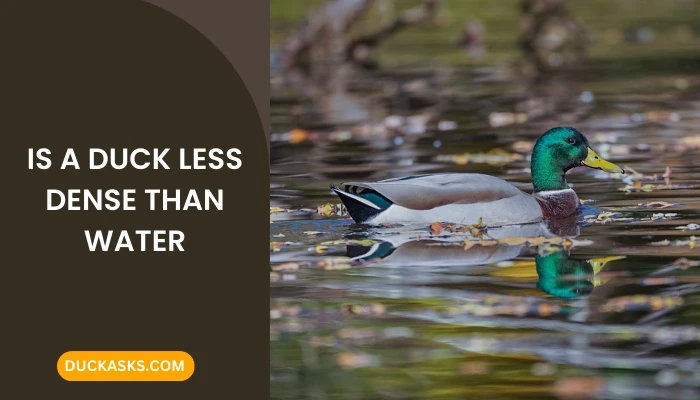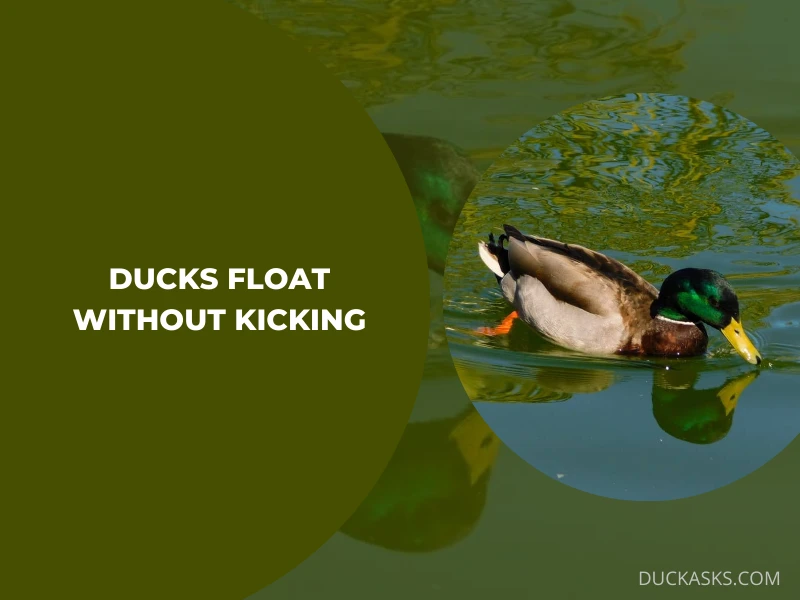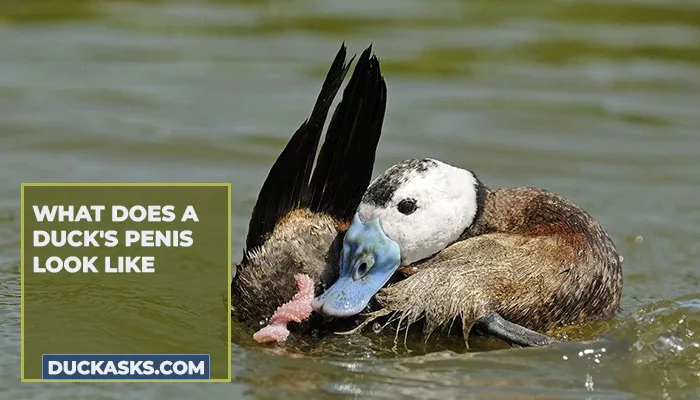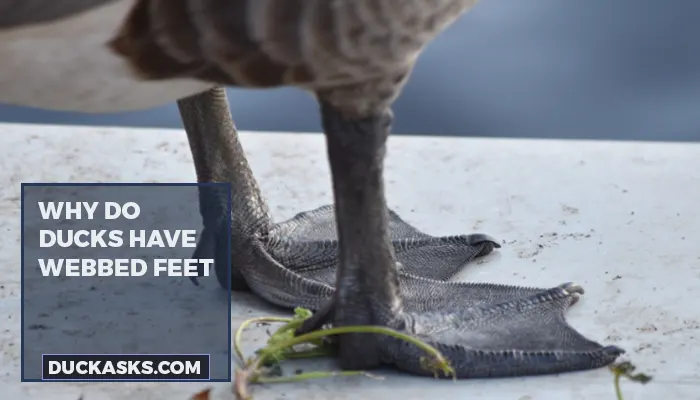Is a Duck Less Dense than Water?
Ever notice a duck gliding across the water? The fact that these birds aren’t entirely formed of feathers or other lightweight materials makes it even more amazing how they manage to stay airborne.
So, is a duck less dense than water? The answer is yes, ducks are slightly less dense than water. This is due to a combination of factors, including their air sacs, waterproof feathers, and webbed feet.
Plus, ducks also utilize some basic physics principles, such as displacement and buoyancy, to their advantage.
This article will discuss in further detail how ducks float on water.

We’ll go through the characteristics that help them float, as well as some of the other ways that ducks have evolved to live in the water.
Looking for more articles about fun fact:
What Is the Density of a Duck?
The typical duck’s density may be measured most precisely at 0.9 grams per centimeter cubed. This is less dense than water, which has a density of 1 gram per centimeter squared.
So, a duck will float on water because its buoyant force is greater than the duck’s weight.
But this can vary depending on the species of duck, its fat content, and the amount of trapped air in its feathers. For example, the densities of mallard and muscovy ducks vary according to their diverse breeds.

Furthermore, the water’s temperature has an impact on a duck’s density. A duck will float higher in colder water than in warmer water because colder water is denser than hot water.
Despite having a density only a little bit higher than water, ducks can float on the water thanks to the structure of their feathers.
Tiny air pockets embedded in duck feathers capture air and increase the body’s buoyancy. A duck’s feathers also resist water, preventing them from becoming burdened down by it and sinking.
Why Do Ducks Float on Water Physics?
Ducks and other waterfowl can float on water due to the natural features they are born with. Everything from their feathers to their bone structure helps them to keep afloat and move over water.

The following bodily features, alongside the basic principle of physics, help ducks to stay afloat –
Buoyancy
The upward force of a fluid, like water that applies to an item submerged in it is known as buoyancy. Additionally, the weight of the fluid that an object displaces determines how much buoyancy it experiences.
Ducks can displace a greater volume of water than their own weight, creating a net upward force that keeps them afloat.
Displacement
In addition to buoyancy, ducks also benefit from displacement. The amount of fluid that an object displaces while submerged in it is known as displacement.
The buoyant force increases as displacement also increases.
Ducks displace a lot of water as they enter it because of their relatively big bodies for their size. Which creates a large buoyant force that helps them stay afloat.
Air Sacs
Additionally, ducks have air sacs inside of them that control their buoyancy. Ducks are able to alter their position and location in the water by manipulating the air pressure in their air sacs.
So, they can float higher or sink deeper into the water by adjusting the quantity of air in these sacs.
Waterproof Feathers
Ducks have specialized waterproof feathers that help them stay buoyant. These feathers are protected against waterlogging by a waterproof coating. The duck’s body is kept dry and buoyant by this waterproofing.
Webbed Feet
Ducks have webbed feet that serve as effective paddles in the water. They can use their webbed feet to propel themselves and make course adjustments while swimming.
Does the Density of a Duck Vary from Breed to Breed?
Yes, there can be breed-specific variations in a duck’s density, however, these variations are usually not particularly noticeable.

Duck breeds have undergone selective breeding for a variety of reasons, which can result in variances in body size and composition. This led to differences in buoyancy and ability to stay afloat.
For example –
Meat-Type Breeds
Ducks like the Pekin or the Muscovy are often bred for meat production. These breeds may differ slightly from other breeds in terms of their muscle-to-fat ratio, which might have an impact on their density.
Since they are larger than other breeds, they find it harder to stay afloat as their weight causes them to sink low into the water.
But, due to their waterproof feathers, which trap air underneath to produce buoyancy, they are able to float without completely sinking down.
Diving Breeds
Diving ducks include pochards, stifftails, and sea ducks. They usually have greater body densities than typical waterfowl, which is an adaptation for them to dive deep into water to hunt for food.
In order to dive deep underwater, they squeeze their feathers flat against their bodies to expel the air under them and achieve a streamlined shape. This reduces buoyancy, which helps them to decrease floatability.
Dabbling Breeds
This breed of ducks is much more lightweight and buoyant. Due to their physical composition, they are able to float high on water without much effort.
Their legs are positioned at the center of their bodies, which allows them to find balance and regain position when they tip over.
They rarely find the need to dive, which is why their feet are small and not lobed. This gives them a rounded shape, which further helps them to stay afloat.
Can Ducks Float Without Kicking?
Ducks can float on water without actively kicking their legs, but they usually rely on some leg movement or gentle paddling to maintain their position and stability in the water.
Moreover, they are naturally buoyant due to their body structure and the presence of air sacs in their bodies, which help them stay afloat.

When ducks are resting or simply floating on calm water, they may tuck one leg under their body to conserve heat and reduce energy expenditure. This can create the appearance that they are floating without kicking.
However, even when they appear motionless, ducks typically make subtle adjustments with their legs and body to maintain their balance and prevent drifting with the current.
Conclusion
To answer the question – is a duck less dense than water? The answer is yes, ducks are slightly less dense than water.
Ducks are able to float on water due to a combination of factors, including their unique physical features and the principles of physics. These factors include buoyancy, displacement, air sacs, waterproof feathers, and webbed feet.
That brings us to the end of our article. We hope we’ve cleared up all the queries you had about ducks and their physical adaptations.
If you would like to ask any more questions or just keep up with what we bring next, make sure to follow us on Facebook, Twitter, and Pinterest.
References
- https://mdc.mo.gov/blogs/discover-nature-notes/water-ducks-back
- https://sciencing.com/ducklings-8542704.html
- https://onlinelibrary.wiley.com/doi/abs/10.1111/j.1474-919X.1995.tb08046.x
- https://www.metzerfarms.com/compare-duck-breeds.html






